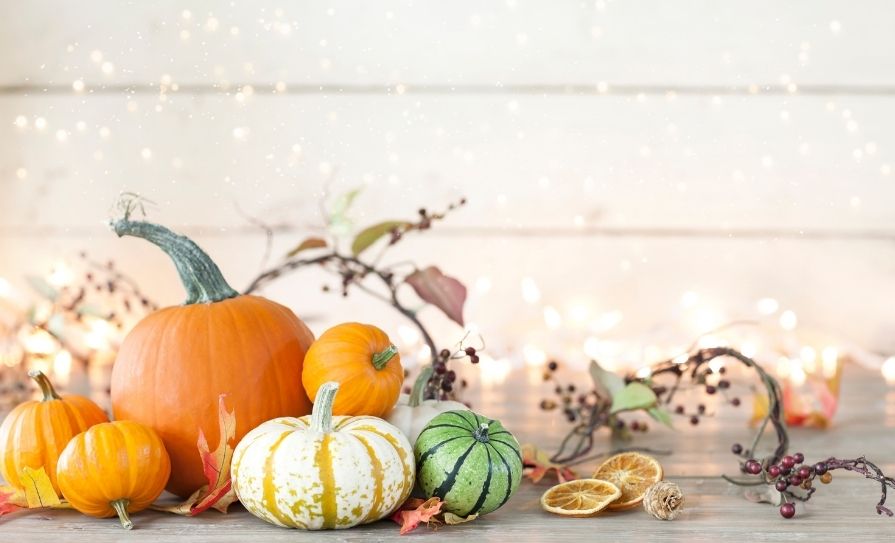This month I am looking at some of the plants we associate with Halloween.
The Irish claim to be the original celebrants of Halloween who then brought it to North America, but in recent years we seem to have re-imported much of the festival’s American commercialisation – for example, those ubiquitous and frankly grotesque decorations. We have even adopted the pumpkin in place of the humble turnip.
Apart from its ‘sculptural’ uses, pumpkin (Cucurbita pepo) flesh is a pleasant enough, if bland, food, but there is medicinal value in its seeds. The European Medicines Agency recognises both the powdered seed and its soft and dry extracts as a traditional herbal medicinal product (THMP) which can aid in the relief of lower urinary tract symptoms related to benign prostatic hyperplasia or an overactive bladder (after serious conditions have been excluded by a medical doctor).
Designation as a THMP is not usually based on clinical trial evidence but on pharmacological plausibility. In the case of pumpkin seeds, the latter involves the presence of phytosterols similar to those found in Saw Palmetto and known to have anti-androgenic effects. A narrative review in an Italian journal of urology and andrology in 2016 recorded 10 in vitro studies showing such effects as well as anti-inflammatory activity and reductions in the growth of prostate tissue. That review, sponsored by a pharmaceutical company, noted six clinical studies where there was an improvement in the International Prostate Symptom Score and in urodynamic parameters after treatment with a commercial pumpkin extract.
Apart from pumpkin, the plant I most associate with Halloween is pomegranate because, as I have previously written, my late mother always bought me what she called a ‘wine apple’. That was the term widely used for the fruit at one time in Ireland but, according to Wikipedia, it is only heard nowadays on Dublin’s Moore Street. In 2022 I suggested that further trials of a standardised pomegranate preparation seemed warranted because the anthocyanin-rich juice had three times the anti-oxidant activity of red wine and green tea and there was clinical evidence of an effect on ACE activity and blood pressure.
A systematic 2023 review, published in Phytotherapy Research, adds further to the knowledge base. Seven clinical trials, on the effects of pomegranate consumption in the form of juice extract or peel extract on cardiovascular risk factors in haemodialysis, confirmed the anti-hypertensive, anti-oxidant, and anti-inflammatory effects while highlighting improvements in lipid profiles such as decreased triglycerides and increased HDL-cholesterol.
A 2024 paper involved a systematic review and meta-analysis of the impact of the juice on blood pressure that included 22 randomised controlled trials (RCTs). There was a significant reduction in both diastolic and systolic pressure and the effect was greatest when systolic pressure was greater than 130mm Hg. Another review and meta-analysis of 11 RCTs with 696 participants in the same journal again in 2024 found that juice supplementation led to a significant decrease in C-Reactive Protein levels compared to controls. The authors of the various reviews invariably called for a more detailed trial using a standardised preparation. Presumably that preparation would be based on the content of the red-coloured anthocyanins that I suspect are behind that Irish ‘wine-apple’ name, as similar anthocyanins are found in red wine.
Peanuts are also closely linked to Halloween celebrations. Peanuts actually belong to the legume or pea family, which includes beans and lentils, and so are not true nuts compared to those from trees like almonds and walnuts. Apart from its fatty oil rich in unsaturated lipids, peanuts contain a number of bioactive molecules including polyphenols such as resveratrol, phytosterols, and Vitamin E. On a positive note, 19 RCTs reviewed in a 2024 Phytomedicine paper found that consuming raw peanuts or foods containing them could improve glycaemic control, insulin resistance, HbA1c and lipid levels, BMI, and atherogenic indices linked to metabolic syndrome and cardiovascular disease.
The downside relates to a mixture of 17 proteins named Ara h 1-18. It is these proteins or more specifically Ara h 1,2,3,6, and 7 that are responsible for the notorious anaphylactic reactions associated with a peanut allergy. Approximately 20 per cent of all anaphylactic reactions and 59 per cent of anaphylactic deaths in the US are due to peanut allergy. Its prevalence has risen since the 1990s due to increased recognition of the problem.
Some 89 per cent of allergy sufferers experience skin reactions such as urticaria, erythema, and angioedema; 42 per cent have respiratory symptoms such as congestion, wheezing, dyspnoea, cough, and throat tightness; 26 per cent report abdominal pain, vomiting, and diarrhoea; and 4 per cent had cardiovascular symptoms in the form of hypotension, arrythmias, and cardiac arrest. The fact that only 20 per cent of children with this allergy are likely to outgrow it (according to a 2023 article in Nutrients) is a particular worry. The importance of strictly avoiding exposure to both nuts and oil and of carrying rescue medication is highlighted by the fact that accidental exposure is common and experienced by one in eight allergic children every year.
Apart from their fatty oil rich in unsaturated lipids, peanuts contain a number of bioactive molecules
However, a 2020 article in Acta Medica Academica entitled ‘Peanut allergy – no longer a life sentence’ described advances in active management of the condition based on food immunotherapy designed to desensitise individuals to peanut-specific immunoglobulin E (IGE). One product in what is called Peanut Oral Immunotherapy (OIT) – which entails the administration of peanut proteins in capsule form – was approved by the FDA in 2020. While it is efficacious in producing desensitisation, the risk of anaphylaxis is said to be three times higher than peanut avoidance. Obviously, like the gold standard food challenge diagnostic test, such a therapy should only be conducted under strict medical supervision.
Other approaches include epicutaneous immunotherapy (EPIT) – involving the transdermal administration of peanut allergens via a patch – or sublingual immunotherapy exposure (SLIT) – where a peanut protein solution is held under the tongue for several minutes.
According to a review of emerging therapies to treat peanut allergy that appeared in the Journal of Pharmacy Practice in 2022, adjuvant combinations with probiotics or anti-IGE receptor antagonists had greater efficacy and improved safety profiles compared to OIT on its own. The report warned that adverse drug reactions were high due to the intentional allergen exposure. It also noted that the applicability of these immunotherapies to those over 18 was unclear, and while desensitisation could be achieved “this may not translate into any real-world benefit to patients”.
So, it is a tale of possibilities and perils when it comes to pumpkin, pomegranate, and peanuts.
Dr Des Corrigan, Best Contribution in Pharmacy Award (winner), GSK Medical Media Awards 2014, is an Adjunct Associate Professor at the School of Pharmacy and Pharmaceutical Sciences at TCD where he was previously Director and won the Lifetime Achievement Award at the 2009 Pharmacist Awards. He was chair of the Government’s National Advisory Committee on Drugs from 2000 to 2011, having previously chaired the Scientific and Risk Assessment Committees at the EU’s Drugs Agency in Lisbon. He chaired the Advisory Subcommittee on Herbal Medicines and was a member of the Advisory Committee on Human Medicines at the HPRA from 2007 to 2024. He has been a National Expert on Committee 13B (Phytochemistry) at the European Pharmacopoeia in Strasbourg and served on the editorial boards of a number of scientific journals on herbal medicine.







